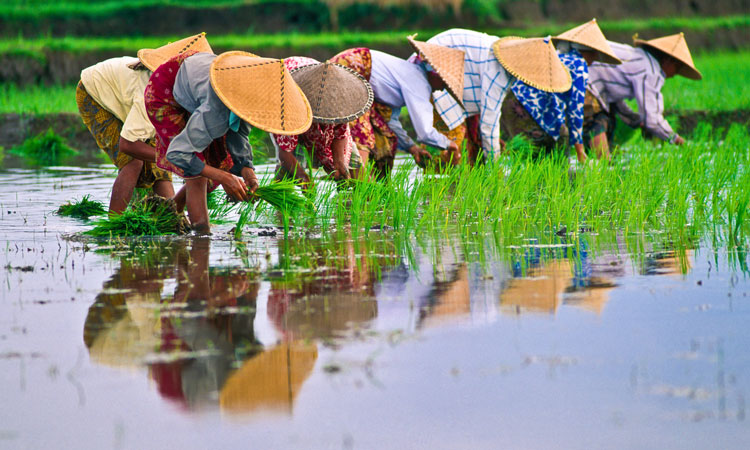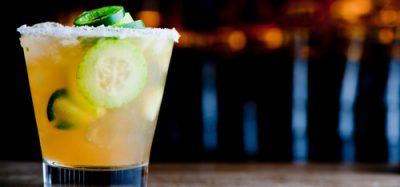Clearing the murky waters of rice fraud
- Like
- Digg
- Del
- Tumblr
- VKontakte
- Buffer
- Love This
- Odnoklassniki
- Meneame
- Blogger
- Amazon
- Yahoo Mail
- Gmail
- AOL
- Newsvine
- HackerNews
- Evernote
- MySpace
- Mail.ru
- Viadeo
- Line
- Comments
- Yummly
- SMS
- Viber
- Telegram
- Subscribe
- Skype
- Facebook Messenger
- Kakao
- LiveJournal
- Yammer
- Edgar
- Fintel
- Mix
- Instapaper
- Copy Link
Posted: 5 March 2021 | Dr Terry McGrath | No comments yet
Researchers in Belfast teamed up with the Mars Global Food Safety Center and Agilent Technologies to help farmers and producers, particularly in the developing world, more easily identify fraud.


The disruption that COVID-19 has created for food supply chains has only served to highlight the pervasive problem of food fraud, which is estimated to cost the global industry $40 billion each year. Not only has the coronavirus crisis led to panic buying, food shortages, export bans and price hikes in some places, it has also ushered in a new era of increased food fraud. Take rice, for example: the economics of the rice trade make it a particularly attractive target for criminals. More than 3.5 billion people globally depend on rice for up to 20 percent of their daily calories. Asia accounts for 90 percent of global rice consumption, but the grain is also the fastest-growing food staple in Africa and Latin America.
According to the UN All Rice Price Index, the price of rice reached its highest level in eight years in 2020, as Covid-related lockdowns and export restrictions from key producers like Vietnam, India and Pakistan tightened global supplies. When prices soar, so, often, does fraud.
The disruption that COVID-19 has created for food supply chains has only served to highlight the pervasive problem of food fraud, which is estimated to cost the global industry $40 billion each year. Not only has the coronavirus crisis led to panic buying, food shortages, export bans and price hikes in some places, it has also ushered in a new era of increased food fraud. Take rice, for example: the economics of the rice trade make it a particularly attractive target for criminals. More than 3.5 billion people globally depend on rice for up to 20 percent of their daily calories. Asia accounts for 90 percent of global rice consumption, but the grain is also the fastest-growing food staple in Africa and Latin America.
According to the UN All Rice Price Index, the price of rice reached its highest level in eight years in 2020, as Covid-related lockdowns and export restrictions from key producers like Vietnam, India and Pakistan tightened global supplies. When prices soar, so, often, does fraud.
Rice criminality
Criminality in the rice supply chain most often involves the replacement of premium products such as Basmati or Thai Hom Mali rice with inferior grain. Wuchang rice, a Chinese geographical indication- (GI-) protected product, is also frequently targeted. In a scandal that emerged in 2010, it was reported that 10 times more Wuchang rice was sold than had been produced. West African countries, including Ghana and Nigeria, are unfortunately all too familiar with expired or low-grade rice being passed off as premium rice in their markets.
Such instances make it all the more pressing to have reliable and robust testing methodologies readily available. One such approach is the use of a two‑tiered system involving the following:
- Rapid, low-cost screening methods to flag up potential problems with rice at a local level – this method needs to be easy for anyone to use and provide a screening result at the point of sampling. These can be used to rapidly identify non-compliant material. Use of this rapid portable screening method means that operators can make important informed decisions earlier in the process.
- Samples of non-compliant materials can then be returned to the laboratory for confirmation-style analysis using more sophisticated and highly sensitive instrumentation.
Historically, various techniques including human sensory panels and analytical instruments for measuring volatiles (Gas Chromatography-Mass Spectrometry (GC-MS)), microsatellites (DNA fingerprinting), kernel morphology (imaging), elemental/isotopic analysis (Isotope Ratio Mass Spectrometry (IRMS) and Inductively Coupled Plasma Mass Spectrometry (ICP-MS)) have been employed to assess food quality and authenticity.
Many of the above approaches, however, require skilled operators or remain very much laboratory based; hence, we were keen to develop a screening method centred on a small hand-held (and field-portable) device – a technology that could be used by stakeholders across the entire supply chain to quickly screen samples for anomalies.
The basic tenet behind the two-tiered system is that the screening device will allow users to test significantly more samples – and at the point of sample collection – compared to a laboratory-based test. Given that the vast majority of samples are legitimate, this enables faster throughput for authenticity testing.
Identifying authentic material in this way will not interrupt the supply chain through the need to hold back product while waiting for a laboratory result. Only materials that test as ‘non‑compliant’ would need to be sent to the lab.
Therefore, in partnership with researchers and colleagues at the Institute for Global Food Security (IGFS) at Queen’s University Belfast, the Mars Global Food Safety Center (GFSC) and Agilent Technologies, we embarked on a research project titled, ‘Fingerprinting Rice Project: Implementing a System to Monitor and Manage Food Fraud, focussing on China, India, Vietnam and Ghana’.
Building on research we have been undertaking at IGFS for the past decade, we developed this two-tiered testing regime of on-site screening supported by rigorous laboratory testing.
The on-site rapid screening test uses a small hand-held Near Infrared (NIR) spectrometer to test samples against chemometric models that we had built to address the issues identified by our partners.
In parallel, we developed the corroborating laboratory-based confirmatory style methods using techniques such as Liquid Chromatography Quadrupole Time‑of‑Flight Mass Spectrometry (LC‑QToF-MS), GC-MS and ICP-MS.
We believe this innovative two-tiered approach is the first of its kind in the world for rice authenticity testing. The portable testing capability allows for very low-cost and rapid supply-chain-based testing, while the laboratory-based methodologies provide additional information on samples when needed.
Regional variations
As you might expect, concerns surrounding rice authenticity vary in each country:
- Our partners at the Mars GFSC and Yangtze Delta Region Institute of Tsinghua University worked locally within China to distinguish between the highly prized, certified GI rice varieties and low-quality, low-grade, substituted rice
- The spice company Green Saffron helped us source samples from India to develop methods to prevent high-quality basmati rice being substituted with lower-quality rice
- Our partners in Ho Chi Minh University of Technology (Vietnam) and University of Cape Coast (Ghana) were concerned with low-quality rice being passed off as high-quality rice in local markets
- The partner in Ghana also wanted to distinguish between locally‑grown and imported rice because different groups within Ghana showed different preferences; paying a premium for either locally-grown or imported rice.
As a project group, we tailored solutions conducted at the local level and adapted the two-tiered fingerprinting toolkit to meet the needs of each specific national challenge. We believe, however, that once fully validated, these techniques could be used anywhere in the world; with potential for the concept to be applied to other foodstuffs aside from rice.
Conducting the research
From the very beginning of the project, each partner was tasked with sourcing authentic supplies of rice from known and trusted sources. The samples had to cover the natural diversity within the rice varieties they were concerned with.
In total, we ended up collecting more than 3,500 individual samples over the course of two years; these were shared with those who needed them to develop their own methods. Each of the partners in the project received a portable NIR device that could be controlled by a phone app. All spectra were stored in the device manufacturers’ cloud database and all partners were able to access this data through a web portal.
Participants also underwent a one‑week training course in instrument use and chemometric model development and validation at IGFS in Belfast. Meanwhile, scientists in Belfast and China were tasked with developing the laboratory-based techniques in parallel.
Over the course of the project, the group developed the following:
- For Indian rice samples – a portable screening method and a GC-MS method that could successfully distinguish Pusa 1121 and Taraori basmati rice varieties from what is considered to be their potential adulterants
- For Chinese samples – a portable screening method, ICP-MS and GC‑MS methods, to distinguish between several GI varieties including Wuchang rice
- For Ghanaian samples – a portable screening method and GC-MS method to distinguish between low-quality and high-quality rice sold on the local market, as well as a portable screening method that could be used to distinguish locally‑grown from imported varieties
- For Vietnamese samples – a portable screening method and LC‑QTOF-MS method for differentiating between different qualities of local Vietnamese rice.
Conclusion
This project was not solely concerned with developing methods and proving the feasibility of a two-tier approach. As a group we put emphasis on raising awareness of the issues and potential solutions within the local communities. By the end of the project, each of the participants set up workshops and demonstrations that were open to the public and local stakeholders. In many instances, stakeholders from neighbouring countries also took part and valuable feedback was collected on how users could make practical use of a two-tier testing system in rice, and how it could apply to authenticity testing in other commodities.
The end of this project is not the end of the story for this group of researchers; we continue to seek out opportunities to work together on food authenticity issues. One of the Chinese partners (Dr Di Wu from Yangtze Delta Region Institute of Tsinghua University) recently became a visiting researcher under the Royal Society Newton International Fellowship Scheme at IGFS, for example. A research proposal from one of the partners in Ghana has been successful in attracting funding and several grant applications are being prepared with the Vietnamese partners.
Both Agilent Technologies and the Mars Global Food Safety Center remain valuable collaborators and we are so grateful for their input in this project.
Who knows what the future may bring! Fantastic things happen when people reach out and are open to new ideas.
The full report of our research project was published in the Journal of AOAC International.
Dr Terry McGrath
Terry is CTO of Bia Analytical, a food‑authenticity spinout company from the IGFS at Queen’s University Belfast. He has over 20 years’ experience in using spectrometry and chemometric methods to identify food fraud.
Issue
Related topics
Food Fraud, Research & development, Supply chain, Technology & Innovation, Traceability
Related organisations
Agilent Technologies, Institute for Global Food Security (IGFS), Mars Global Food Safety Center
Related regions
Africa, Asia Pacific & Oceania, Central and South Asia, UK & Ireland









